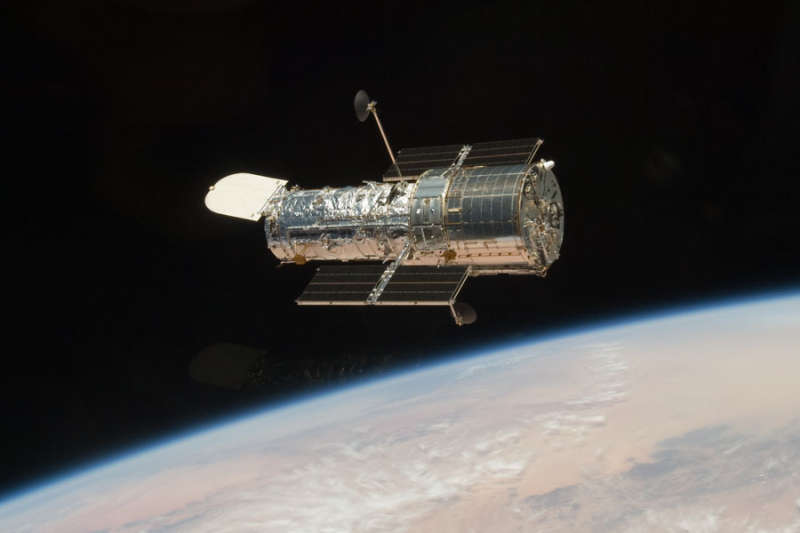
|
Credit: STS-125 Crew,
NASA
Explanation:
Why put observatories in space?
Most telescopes are on the ground.
On the ground, you can deploy a heavier telescope
and fix it more easily.
The trouble is that
Earth-bound telescopes
must look through the Earth's atmosphere.
First, the Earth's atmosphere
blocks out a broad range of the
electromagnetic spectrum, allowing
a narrow band of visible light to reach the surface.
Telescopes which explore the Universe using light
beyond the visible spectrum, such as those onboard the
Chandra X-ray Observatory, and the
Fermi Gamma Ray Space Telescope
need to be carried above the absorbing atmosphere.
Second, the Earth's atmosphere
blurs the light it lets through.
The blurring is caused by varying density and
continual motion of air.
By orbiting above the Earth's atmosphere,
the Hubble Space Telescope,
pictured above last week after being captured, refurbished, and released,
can get clearer images.
In fact, even though HST
has a mirror 15 times smaller than large Earth-bound telescopes,
it can still resolve finer details.
A future large
telescope for space, the
James Webb Space Telescope
is currently planned for launch in 2014.
|
January February March April May June July August September October November December |
| ||||||||||||||||||||||||||||||||||||||||||||||||
NASA Web Site Statements, Warnings, and Disclaimers
NASA Official: Jay Norris. Specific rights apply.
A service of: LHEA at NASA / GSFC
& Michigan Tech. U.
Based on Astronomy Picture
Of the Day
Publications with keywords: HST
Publications with words: HST
See also:
